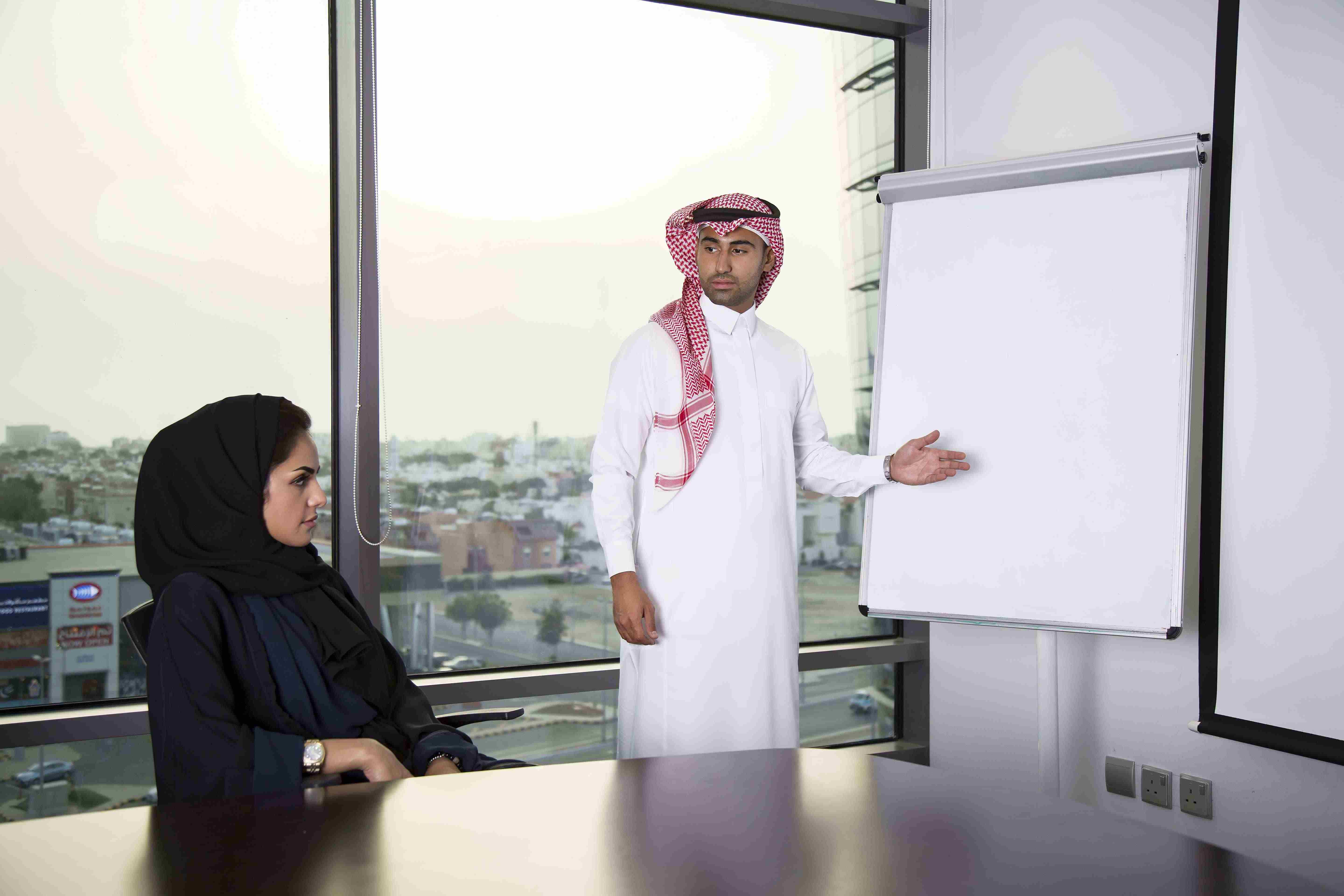In today’s fast-evolving Saudi economy, organizations face a unique challenge: how to continuously prepare their workforce for new opportunities while remaining competitive in both regional and global markets. With the Vision 2030 transformation agenda accelerating diversification, Saudi companies must carefully assess the distinction between corporate training and employee development programs.
While both terms are often used interchangeably, they serve very different strategic purposes. Corporate training tends to focus on immediate, task-oriented skill acquisition, while Employee Development Programs (EDPs) aim to cultivate long-term growth, leadership capacity, and innovation potential.
For Saudi executives, business owners, and decision-makers, understanding this distinction is not a theoretical exercise—it is a matter of organizational survival and long-term success. This article examines the key differences between employee development and corporate training, their respective roles in the Saudi business environment, and how organizations can leverage both to achieve competitiveness.
We will also link this discussion to our earlier articles, “Employee Development Programs in Saudi Arabia: Driving Productivity and Innovation , demonstrating how employee development forms the backbone of productivity, innovation, and competitive advantage.

________________________________________________________________________________________________________________________
Defining Corporate Training
Corporate training refers to structured learning programs designed to equip employees with specific knowledge or skills to perform their current roles effectively. Typical examples include:
• Technical workshops for new software or machinery.
• Compliance training (safety, legal regulations, data protection).
• Customer service improvement courses.
• Short-term skill-building sessions.
Corporate training is often reactive—a company identifies a performance gap or regulatory requirement and designs a training program to address it. Its success is usually measured by short-term improvements in task performance, compliance, or operational efficiency.
Key Features of Corporate Training
1. Short-Term Focus: Immediate application of skills to solve pressing business needs.
2. Task-Specific: Training is narrowly designed around current job responsibilities.
3. Standardized Approach: Programs are uniform, often the same for all employees in similar roles.
4. Limited Scope: Does not typically address long-term career growth or leadership potential.
________________________________________________________________________________________________________________________
Defining Employee Development Programs (EDPs)
By contrast, Employee Development Programs are strategic and long-term initiatives designed to enhance an employee’s overall career trajectory, personal growth, and ability to contribute to organizational innovation. EDPs typically include:
• Leadership development initiatives.
• Cross-functional projects and stretch assignments.
• Mentorship and coaching.
• Digital skills and future-readiness training.
• Programs fostering creativity, innovation, and problem-solving.
Whereas corporate training addresses the present, EDPs are about the future—preparing employees not only for their current jobs but for upcoming challenges, leadership roles, and the company’s strategic direction.
________________________________________________________________________________________________________________________
Key Features of Employee Development Programs
1. Long-Term Orientation: Designed to cultivate continuous improvement and career growth.
2. Holistic Approach: Focuses on leadership, innovation, adaptability, and cross-functional skills.
3. Employee-Centered: Tailored to the aspirations and strengths of individual employees.
4. Strategic Impact: Directly linked to organizational competitiveness, innovation, and transformation.
________________________________________________________________________________________________________________________
Core Differences Between Corporate Training and Employee Development
| Employee Development Programs | Corporate Training | Dimension |
| Cultivate long-term capabilities and leadership | Address immediate skill gaps | Purpose |
| Broad, cross-functional, strategic | Narrow, role-specific | Scope |
| Long-term | Short-term | Time Horizon |
| Enhances competitiveness, innovation, and retention | Improves immediate performance | Impact |
| Employee’s career growth aligned with organizational goals | Organization’s short-term needs | Focus |
| Productivity, innovation capacity, retention, leadership pipeline | Task completion, compliance rates | Measurement |
This table underscores why both are necessary but not interchangeable. For Saudi companies operating in fast-moving industries—finance, technology, healthcare, and energy—exclusive reliance on corporate training is insufficient.
________________________________________________________________________________________________________________________
The Saudi Context: Why the Distinction Matters
- Vision 2030 and Human Capital Development
Saudi Arabia’s Vision 2030 explicitly emphasizes human capital development as a national priority. Corporate training may help with compliance and operational efficiency, but it is Employee Development Programs that align with the broader vision of creating a knowledge-based economy.
- Competitive Pressures
As global corporations establish operations in the Kingdom, Saudi firms must match international standards of workforce development. Short-term training cannot create the deep talent pipelines required to remain competitive.
- A Youthful Workforce
With more than half of Saudi Arabia’s population under the age of 35, long-term development programs are essential for channeling youthful energy into future-ready leadership.
________________________________________________________________________________________________________________________
The Strategic Role of Employee Development Programs in Saudi Arabia
- Building Leadership Pipelines
EDPs cultivate leaders from within, ensuring organizations have a ready supply of capable managers aligned with Saudi corporate culture and values.
- Enhancing Employee Engagement and Retention
EDPs signal to employees that the company is invested in their growth. This reduces turnover and attracts top talent.
- Driving Innovation
By equipping employees with creative problem-solving skills, EDPs generate innovative solutions that strengthen competitiveness.
- Supporting Digital Transformation
Saudi companies undergoing digitalization require future-ready employees. EDPs ensure adaptability to new technologies.
________________________________________________________________________________________________________________________
Challenges and Solutions
- Overemphasis on Training at the Expense of Development
Many Saudi firms still treat training as the primary HR investment. Solution: Shift budgets to include long-term EDPs.
- Difficulty in Measuring ROI
While training ROI is easily measured through task performance, EDP outcomes (e.g., innovation) are harder to quantify. Solution: Use balanced scorecards and employee analytics.
- Cultural Resistance
Some organizations value short-term results over long-term investment. Solution: Executive buy-in and linking EDPs to Vision 2030 deliverables.
________________________________________________________________________________________________________________________
Case Study Insights
• Company X (Healthcare): Introduced a hybrid model combining corporate training for compliance with EDPs for leadership. Result: 30% improvement in patient care outcomes and higher retention.
• Company Y (Financial Services): Replaced repetitive annual training with a development-focused mentorship program. Result: Reduced turnover by 20% and improved innovation in product design.
• Company Z (Energy Sector): Focused on EDPs that included digital literacy. Result: Employees successfully transitioned to automation technologies, improving efficiency by 40%.
________________________________________________________________________________________________________________________
Recommendations for Saudi Executives
1. Balance Both Approaches: Corporate training and EDPs are complementary, not substitutes.
2. Integrate with Strategy: EDPs must be tied to organizational objectives such as market expansion or innovation.
3. Leverage Technology: Invest in digital learning platforms that make EDPs scalable and cost-effective.
4. Partner Externally: Collaborating with external training providers can enrich in-house development efforts.
5. Measure Holistically: Track development outcomes such as innovation, engagement, and competitiveness, not just task completion.
________________________________________________________________________________________________________________________
Frequently Asked Questions (FAQs)
Q1: What is the main difference between training and development?
A1: Training focuses on immediate role-specific skills, while development prepares employees for long-term career growth and leadership.
Q2: Are Employee Development Programs expensive to implement?
A2: While they require investment, the long-term ROI through retention, innovation, and competitiveness far outweighs the costs.
Q3: Do Saudi SMEs benefit from EDPs or just large corporations?
A3: SMEs benefit equally, especially since development programs help retain talent without competing with larger firms’ salaries.
Q4: Can corporate training evolve into employee development?
A4: Yes. When training is embedded in a long-term career framework, it contributes to employee development.
Q5: How do EDPs align with Saudi Vision 2030?
A5: They support national goals of building a knowledge-based economy, fostering innovation, and preparing a globally competitive workforce.
________________________________________________________________________________________________________________________
For Saudi companies navigating an increasingly competitive and globalized market, distinguishing between corporate training and Employee Development Programs is critical. While training addresses immediate operational needs, it is EDPs that drive productivity, innovation, and long-term competitiveness.
When considered alongside our earlier discussions in “Employee Development Programs in Saudi Arabia: Driving Productivity and Innovation”, the message is clear: corporate training is necessary, but employee development is transformative.
Saudi leaders, executives, and entrepreneurs who prioritize Employee Development Programs will not only meet the demands of today’s economy but will also shape the future of Saudi Arabia’s corporate landscape.










